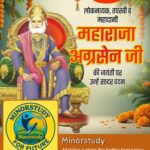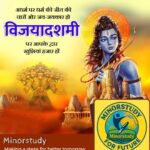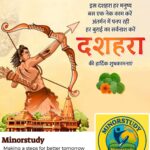Maha Sankashti Chaturthi – History, Significance, Facts & Life Lessons
Maha Sankashti Chaturthi is one of the most auspicious and spiritually uplifting festivals dedicated to Lord Ganesha, the remover of obstacles (Vighnaharta) and the god of wisdom, intellect, and prosperity. While Sankashti Chaturthi is observed every lunar month on the fourth day (Chaturthi) after the full moon (Krishna Paksha), Maha Sankashti Chaturthi is considered the most important of all — as it falls in the month of Magha and is associated with the most powerful blessings of Lord Ganesha.
- History of Maha Sankashti Chaturthi
- Timeline of Maha Sankashti Chaturthi
- Interesting Facts About Maha Sankashti Chaturthi
- Significance of Maha Sankashti Chaturthi
- Observance & Puja Vidhi (Rituals)
- Wishing Messages for Maha Sankashti Chaturthi
- Importance in Our Life and Society
- Daily Life Impact
- Frequently Asked Questions (FAQs)
- Conclusion
In this detailed guide, we will explore the history, significance, rituals, interesting facts, FAQs, and the daily life impact of this divine observance, along with meaningful wishes and ways it remains important to society even today.
History of Maha Sankashti Chaturthi
The origin of Maha Sankashti Chaturthi is rooted in ancient Hindu scriptures and legends. According to the Ganesha Purana and Mudgala Purana, Lord Ganesha appeared in different forms to destroy evil forces and restore peace in the universe. Devotees believe that fasting on Sankashti Chaturthi, especially the Maha Sankashti, grants the ultimate blessings of Ganesha and removes life’s greatest obstacles.
The most popular legend says that once, the Moon God (Chandra) mocked Lord Ganesha’s appearance, and in anger, Ganesha cursed him that anyone who saw the Moon on Ganesh Chaturthi would face false accusations. Later, upon the Moon God’s apology, Ganesha softened the curse and declared that observing Sankashti Chaturthi fasts would absolve sins and misfortunes.
Maha Sankashti holds additional importance because it marks the day when Lord Ganesha relieved the Devas (gods) from a massive cosmic crisis, proving His role as the supreme remover of difficulties.
Timeline of Maha Sankashti Chaturthi
| Era / Period | Event |
|---|---|
| Vedic Times | Early worship of Ganapati as the remover of obstacles mentioned in Rigveda hymns. |
| Puranic Period | Ganesha Purana and Mudgala Purana describe Sankashti Vrata as a powerful remedy for karmic troubles. |
| Medieval Period | Popularized by saints and temple traditions in Maharashtra, Karnataka, and Tamil Nadu. |
| Modern Era | Observed across India and abroad, with live temple telecasts and large community prayers. |
Interesting Facts About Maha Sankashti Chaturthi
“Sankashti” means deliverance during difficult times.
Maha Sankashti occurs once a year in the Magha month (January–February).
The fast is broken only after sighting the Moon and performing special prayers.
Every Sankashti Chaturthi has a different Vrat Katha (story) and peeta (form) of Ganesha.
Maha Sankashti is considered more powerful than regular Sankashti days.
Many devotees chant the Ganesha Atharvashirsha on this day for maximum benefit.
It is believed to remove obstacles not only in this life but also from past karmic cycles.
Significance of Maha Sankashti Chaturthi
The significance of this day lies in faith, discipline, and surrender to divine will. Devotees believe:
Spiritual Significance: Fasting purifies the body and mind, helping devotees focus on devotion and self-discipline.
Karmic Cleansing: The vrata helps in removing accumulated bad karma and ensuring a smoother life path.
Prosperity & Wisdom: Lord Ganesha blesses devotees with intelligence, wealth, and spiritual growth.
Problem Solving: Many believe that complex life problems dissolve after performing this vrat with sincerity.
In many households, this day is also considered ideal for seeking blessings before starting new ventures, as it’s believed that Ganesha’s grace ensures success.
Observance & Puja Vidhi (Rituals)
The Maha Sankashti Chaturthi observance is performed with devotion and involves a strict fast from sunrise to moonrise.
Step-by-step observance:
Morning Rituals:
Wake up before sunrise, bathe, and wear clean clothes.
Take a Sankalp (vow) to observe the fast sincerely.
Fasting:
Most devotees follow a strict nirjal fast (without water).
Some consume fruits, milk, or light vegetarian food.
Evening Puja:
Clean and decorate the puja area with flowers and rangoli.
Install a clay or metal idol/photo of Lord Ganesha.
Offer Durva grass, Modaks, bananas, and incense.
Recite the Maha Sankashti Vrat Katha for the year.
Moon Sighting:
Wait until the Moon rises, then offer Arghya (water offering) to the Moon God.
Break the fast only after moon sighting.
Wishing Messages for Maha Sankashti Chaturthi
Here are some heartfelt wishes you can share:
🌸 “May Lord Ganesha remove all obstacles from your life this Maha Sankashti Chaturthi and bless you with happiness, wisdom, and prosperity.”
🌸 “On this Maha Sankashti, may your troubles dissolve like camphor in the flame of devotion.”
🌸 “Ganpati Bappa Morya! Wishing you divine blessings on Maha Sankashti Chaturthi.”
Importance in Our Life and Society
Maha Sankashti Chaturthi is not just a religious ritual but also a spiritual tool for building resilience in life. Here’s why:
Promotes Self-Discipline: The fast tests one’s willpower and encourages moderation.
Strengthens Faith: Believing in divine help brings hope during hard times.
Encourages Community Bonding: Group prayers and temple visits unite people.
Revives Cultural Heritage: Keeps ancient traditions alive for future generations.
Daily Life Impact
Helps reduce stress by instilling patience and positivity.
Encourages mindful eating and detox through fasting.
Creates a gratitude mindset, as devotees focus on blessings rather than problems.
Builds a stronger moral compass, inspired by Ganesha’s qualities.
Frequently Asked Questions (FAQs)
Q1: When is Maha Sankashti Chaturthi in 2025?
It will fall in the month of Magha, likely in February (exact date depends on the lunar calendar).
Q2: Can I drink water during the fast?
Yes, if you can’t do nirjal, you can follow a fruit and milk fast.
Q3: Is it necessary to sight the Moon?
Yes, moon sighting is essential before breaking the fast.
Q4: Can non-Hindus observe this vrat?
Absolutely, anyone can perform the vrat with devotion.
Q5: Is Maha Sankashti more powerful than regular Sankashti Chaturthi?
Yes, because it is considered the day when Lord Ganesha’s blessings are at their peak.
Conclusion
Maha Sankashti Chaturthi is not just about fasting or rituals — it’s about removing the obstacles in the journey of life, both seen and unseen. It connects us with the timeless wisdom of surrender, patience, and faith in divine order.
By observing this vrat with sincerity, one can bring peace, prosperity, and purpose into life. In a modern world full of challenges, the values of Maha Sankashti Chaturthi remain more relevant than ever.








